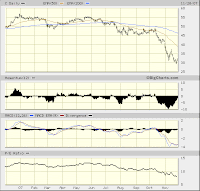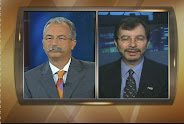
In his soon to be published quarterly report, legendary value investor, Bill Miller, makes the following observations:
“This market has been remarkably serially correlated. In plain talk, what has gone up keeps going up, and what has not, does not. Valuation has not mattered at all. What has mattered is price momentum. This is very similar to what we saw with tech, telecom, and internet names in 1999. It is not yet that extreme, but it is pretty extreme.
The best quintile of stocks based on traditional valuation factors such as price to earnings, price to book, price to sales, and dividend yield, has underperformed the market by over 1000 basis points this year. The best quintile on price momentum alone, using 3 and 9 month price trends, has outperformed by 1400 basis points.”
Mr. Miller’s comments highlight several points that have been repeatedly raised on this blog and in my reports – namely the highly correlated nature of the equity markets. Two questions are related to this point: Why are markets so highly correlated and how should an investor exploit the situation?
As noted many times before, the highly correlated nature of the equity markets is due in large part to the enormous sums of actively-traded money that is in the hands of the hedge fund and other momentum lemmings. Bereft of original ideas, many hedge fund managers have little recourse than to chase the trades that ensure their relative performance record does not fall so far behind their counterparts (code for keeping my house in Greenwich).
Naturally, it should be assumed that these very same hedge fund managers believe that they have systems and investment strategies designed to gain alpha. At least that’s what the marketing material says. The sad fact is, however, the results are just not there. Since the proliferation of hedge funds, the performance results has regressed to the mean, so much so that there is little to no difference between the on average underperforming hedge fund manager and the on average underperforming mutual fund manager. (The only real difference is the compensation scheme.)
Moreover, logic dictates that there are only so many truly original strategies thereby limiting the arbitrage and other alpha generating strategies available. Put another way, how many brilliant 20-something money managers can there be? Hence, lemming-like momentum investing.
If this be the case, how does an investor exploit the situation?
Investment Strategy Implications
There is every reason to believe that hedge fund managers pressured to justify their high fees will be even doubly pressured these last two months to produce as much alpha as conceivably possible. Therefore, if price momentum investing is the dominant approach taken by many such market players, the odds are that, from now until December 31st, what has worked will continue to work meaning that bottom fishing and contrarian plays will likely underperform and the winners of 2007 will remain so, if not accelerate until the books close for the year.
The momentum game is here to stay. At least through the end of this year and likely into the early part of next year. Contrarian strategies, like the kind that Bill Miller advocates, will likely remain the least attractive approach to investing for some time.
No doubt, the day will come when being a contrarian will pay. However, for the reasons stated above (and others noted in prior blog posting and reports), I don’t believe that day is today.
Actionable steps: For predominantly US investors stay overweight the weak US dollar and global growth story of Info Tech, Industrials, Energy, Gold, and Large Cap Growth. Stay underweight the US consumer related themes of Financials and Consumer Discretionary. For global players sell China into strength, stay long Europe large and mega cap (Europe 350 – IEV) and a proportionally balanced mix of emerging market issues.
Specific investment recommendations can be found in the Model Growth Portfolio (MGP), which is available only to subscribers. MGP performance results are noted on the upper left portion of this blog.
 excerpts from this week's report:
excerpts from this week's report:































































